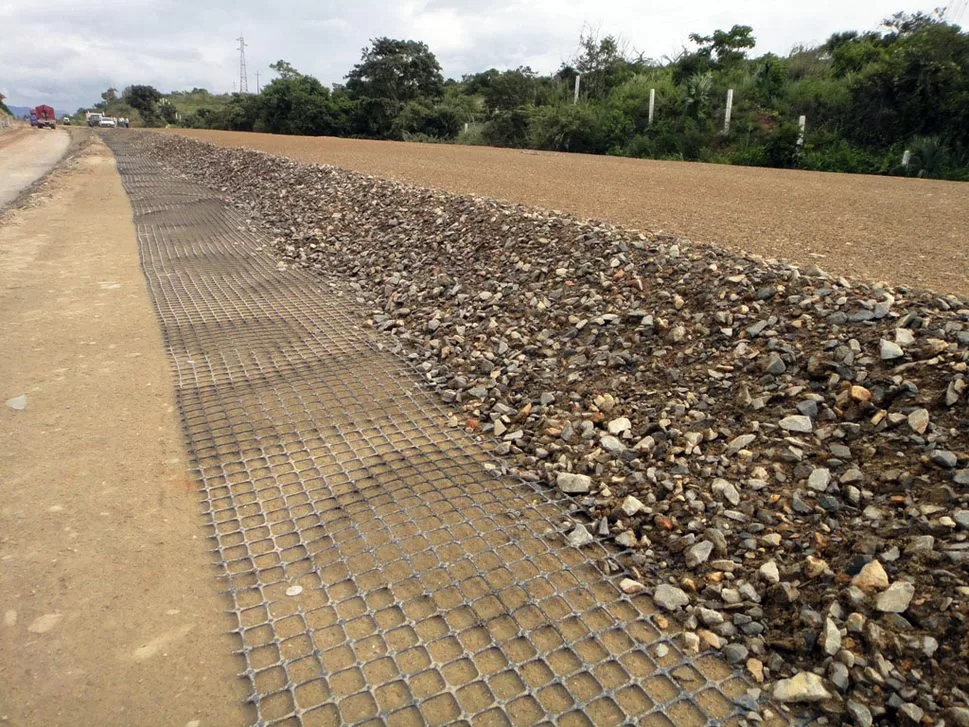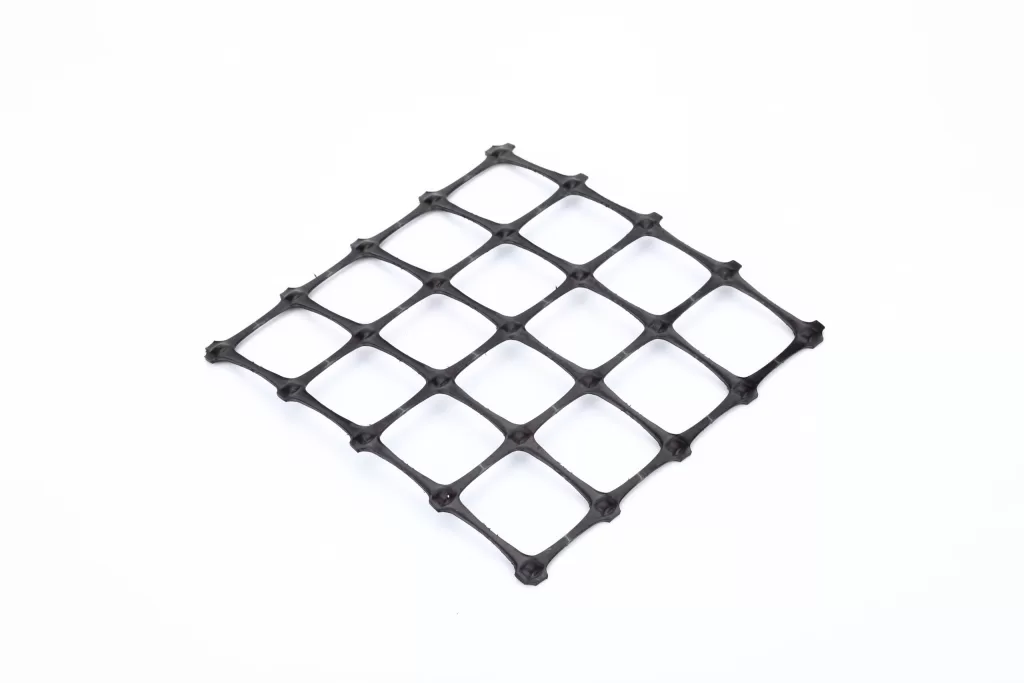+86-159 9860 6917
info@geofantex.com
geofantex@gmail.com
+86-400-8266163-44899
In the realm of civil engineering and construction, stabilizing materials is crucial for enhancing the structural integrity of soils. Among these materials, biaxial geogrid stands out as a particularly effective solution for ground stabilization and reinforcement. This article delves into the nature of biaxial geogrids, exploring their composition, functionality, benefits, and differences from similar materials like geotextiles.

What are the materials in biaxial geogrid?
Biaxial geogrids are commonly made from the following materials:
- Polypropylene (PP): This is the most widely used material for biaxial geogrids. Polypropylene is favored for its high strength, durability, resistance to chemical and biological degradation, and cost-effectiveness. It is typically processed through extrusion and stretching to create the grid structure.
- Polyethylene (PE): Some biaxial geogrids are made from polyethylene, particularly high-density polyethylene (HDPE). Like polypropylene, HDPE is known for its chemical resistance and durability, though it may offer different mechanical properties compared to polypropylene.
- Polyester (PET): While less common, polyester can also be used in the production of biaxial geogrids. Polyester offers high tensile strength and is particularly resistant to long-term creep, making it suitable for applications requiring stability over extended periods.
- Coatings: Biaxial geogrids may also have a protective coating, often made from PVC or other polymers, to enhance their resistance to UV radiation, chemicals, and mechanical damage.
The choice of material and any additional coatings depends on the specific application requirements, such as the need for resistance to certain environmental factors or mechanical stresses.
What is geogrid stabilization?
Geogrid stabilization involves using geogrid materials to reinforce and stabilize soil or other materials, enhancing their load-bearing capacity and overall stability. Here’s a breakdown of what this entails:
Purpose: The primary goal of geogrid stabilization is to improve the structural performance of soil or other materials by distributing loads more evenly, reducing settlement, and preventing erosion. It is commonly used in civil engineering applications such as road construction, embankments, retaining walls, and foundations.
Mechanism: Geogrids are typically made from polymer materials like polypropylene, polyethylene, or polyester, and are designed with a grid-like structure. When installed in soil or aggregate layers, the geogrid provides reinforcement by:
Increasing Load Distribution: The grid helps spread applied loads over a larger area, reducing localized stress and potential failure points.
Preventing Settlement: By reinforcing the soil or aggregate, geogrids help reduce the amount of settlement that occurs under load, improving long-term stability.
Enhancing Shear Strength: The interaction between the geogrid and the soil or aggregate improves the overall shear strength, which is crucial for stability.
Applications: Geogrid stabilization is used in various applications, including:
- Road Construction: To improve the performance of roadbeds and subbases, leading to longer-lasting pavements.
- Embankments: To stabilize soil and prevent excessive settlement or failure.
- Retaining Walls: To provide additional support and prevent wall collapse or sliding.
- Foundation Support: To strengthen foundations on weak or loose soils.
Installation: The installation process involves placing the geogrid in the desired location within the soil or aggregate layer, often during the construction of roads, embankments, or other structures. It is then covered with additional layers of soil or aggregate, which are compacted to ensure proper interaction between the geogrid and the surrounding material.
Overall, geogrid stabilization is a cost-effective and efficient method for enhancing the performance and durability of various civil engineering structures.
What are the benefits of biaxial geogrid?
- Enhanced Load Distribution: It spreads the loads over a broader area, thereby reducing pressure on underlying soils.
- Improved Soil Stability: By reinforcing the soil, it helps prevent soil movement and reduces the risk of erosion.
- Cost Efficiency: Biaxial geogrids can reduce the need for traditional, more expensive construction materials like concrete and large quantities of compacted fill.
- Environmental Benefits: Using geogrids can minimize the environmental impact by reducing the quantity of natural resources required and the overall carbon footprint of construction projects.
- Ease of Installation: Biaxial geogrids are lightweight and easy to install, which can significantly decrease the time and labor costs associated with construction projects.
What is the difference between geogrid and geotextile?
While both geogrids and geotextiles are used for soil stabilization and reinforcement, they differ significantly in their manufacturing purposes and functions. Geotextiles are manufactured for separation, filtration, and drainage purposes, characterized by their permeable fabrics that help prevent the intermixing of different soil layers while allowing water to pass through, which is crucial for drainage and erosion control. In contrast, geogrids are manufactured specifically as a reinforcement material and are characterized by their open grid-like structure, which allows them to interlock with soil particles and provide tensile reinforcement. This makes geogrids more suited for structural support and load distribution.
Biaxial geogrid represents a robust and versatile stabilizing material in the field of civil engineering, offering substantial benefits in terms of soil stabilization, cost efficiency, and environmental sustainability. Its unique material composition and structural characteristics make it an ideal choice for reinforcing challenging soil conditions and extending the lifespan of infrastructure projects. Understanding the distinct functions and advantages of geogrids over other materials like geotextiles can help in choosing the right solution for specific engineering challenges.



Get Free Sample
We’ll respond as soon as possible(within 12 hours)






















